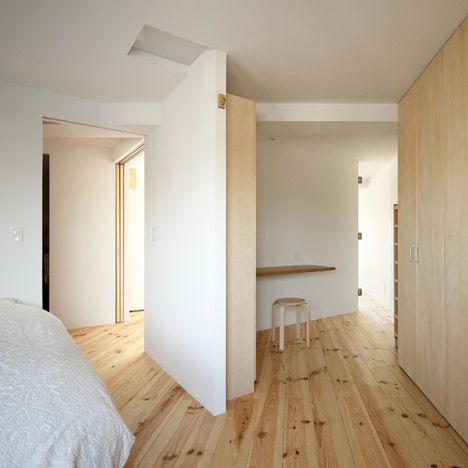
High-rise residence by Hiroyuki Tanaka Architects
Japanese architect Hiroyuki Tanaka added diagonal walls and blue lights to this Tokyo apartment.
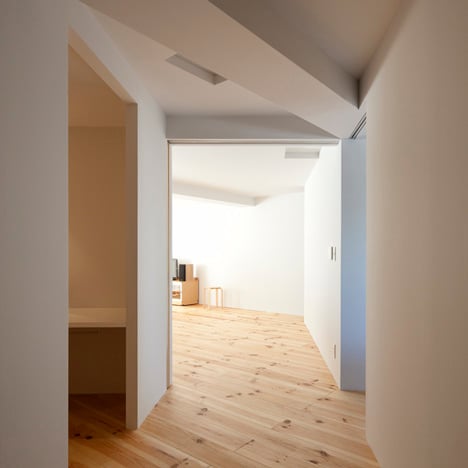
The central cross-shaped partition creates views between the three main rooms, which comprise a bedroom, a living room and an entrance lobby.
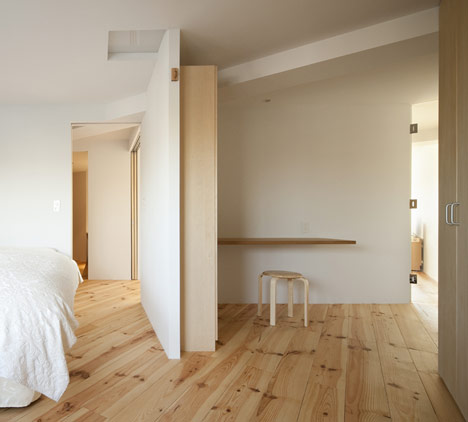
There are softwood floors and furniture in each room and all walls are painted white.
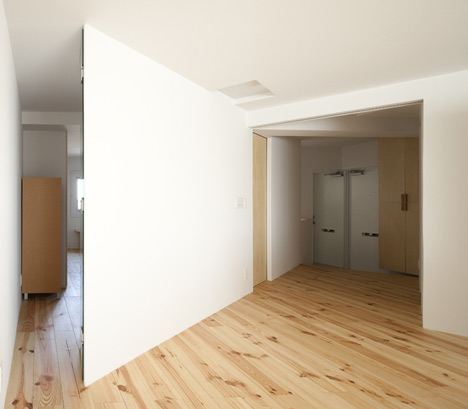
After dark, the blue-filtered lights in the living room cause the bright white lights of the city outside to appear orange to the eye.
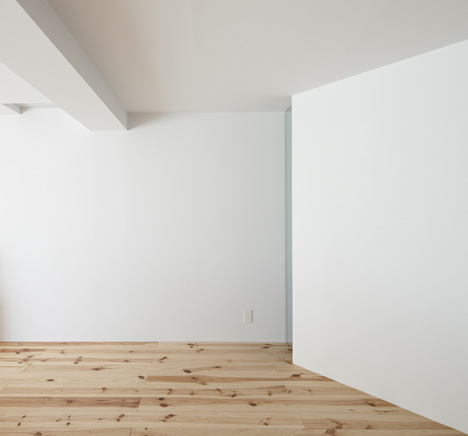
We've featured a few projects by Hiroyuki Tanaka on Dezeen, including a table with the structure of an ancient temple - see them all here.
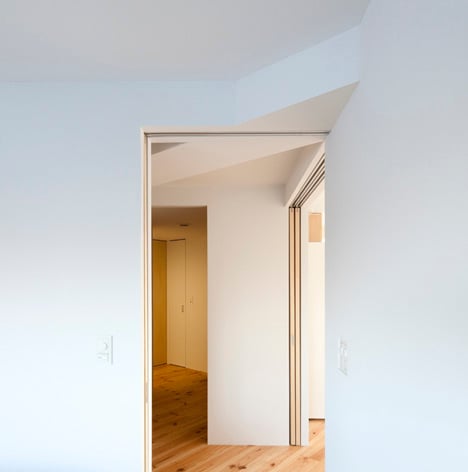
Photography is by Shimizu Ken.
Here are a few words from Tanaka:
High-rise residence
We often look out over cityscapes from high places or out onto the scenery outside from planes. If we had the chance to build in one of these high places we would create a space that fully exploits the view.
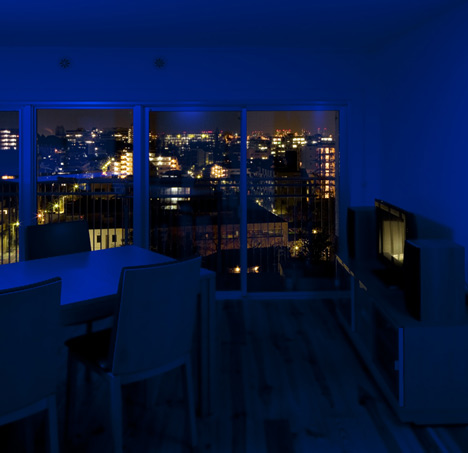
The plan (improving high-rise residences)
(STEP 1) Space always needs to be divided into rooms when we consider living requirements. However, if you divide the rooms in a plan such that the opening is shared and becomes a family view then the view becomes a family treasure. This in turn makes the view become dynamic by having as large an opening as possible. How can we create this?
(STEP 2) Walls are normally placed perpendicular or parallel to the outer wall of a building but doing so divides up the broad opening. So, we tried revolving this neat cross-shape plan.
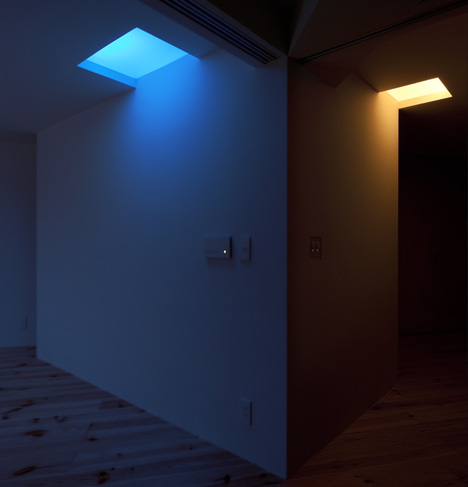
(STEP 3) We moved the angle of the cross to create a plan where the sides are open to avoid making walls on the two open sides.
Lighting: We wanted to keep the special view to look out on and also keep the night view unique. Couples often have drinks together after dinner so we wondered if we could create a relaxed space like a hotel bar. For this, we tried planning lighting that made internal room lighting minimal and made the most of the nightscape outside borrowing the Tokyo nightscape made up of, perhaps wasteful, amounts of light without using electricity ourselves.
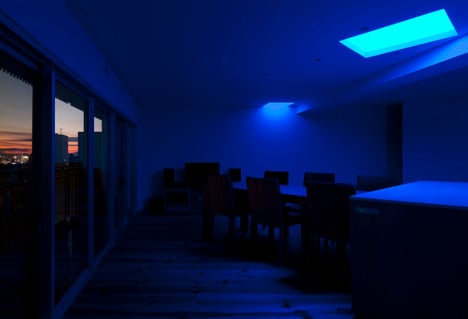
How about sharing both the view and the light? However, the Tokyo nightscape we were using is whitish compared to Western cities, due to the light sources. Having a thick blue light cascade down from the ceiling in the living room is our way of visually fixing the whitish light sources. Due to the correcting effects of human vision, when the expected white balance in the room leans towards blue, the whitish light from the Tokyo nightscape will appear orange within a few minutes. This is because the eye recognises the inside of the room, turned blue, as its white balance and mistakes the light coming from outside the room as closer to the complementary color of blue, orange (the room is turned to an orange color beforehand).
So, with this intriguing tuning feature of human sight and this phenomenon of opening up, the couple sees the world through new eyes.
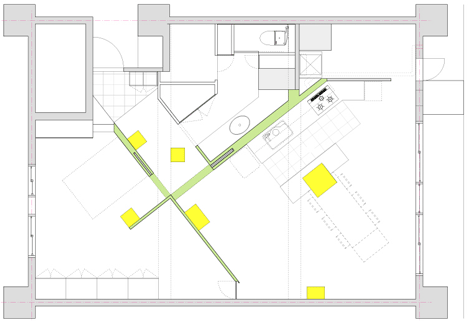
Project name: high-rise residence
Architect: Hiroyuki Tanaka Architects
Project leader: Hiroyuki Tanaka
Project Team: Tatsuya Furukawa Hiroki Hanazuka
Lighting Design: Mayumi Kondo (Luxie)
Construction management:TANK
Date: study Feb 2011 – June 2011, construction July 2011- Oct 2011
Area: 74sqm
Location: Tokyo, Japan